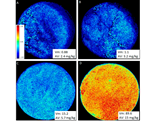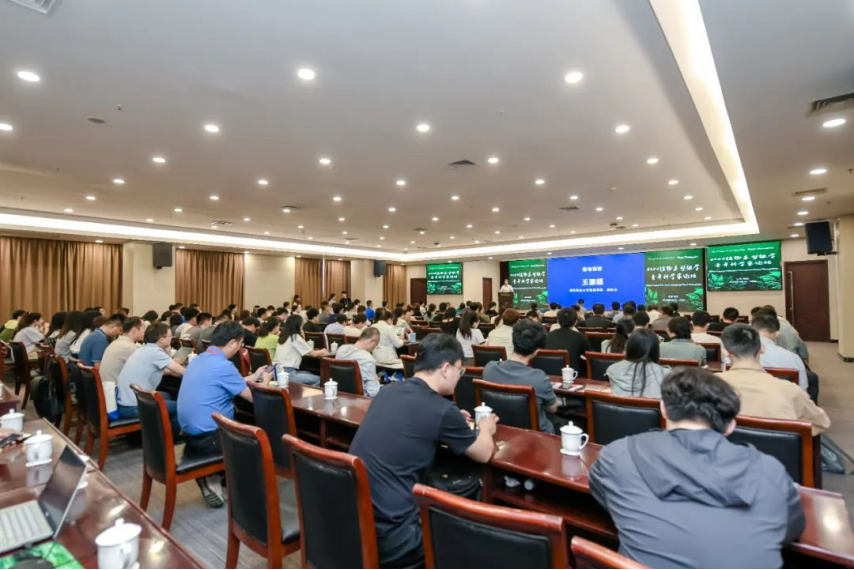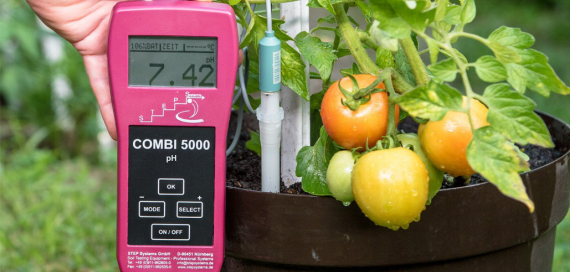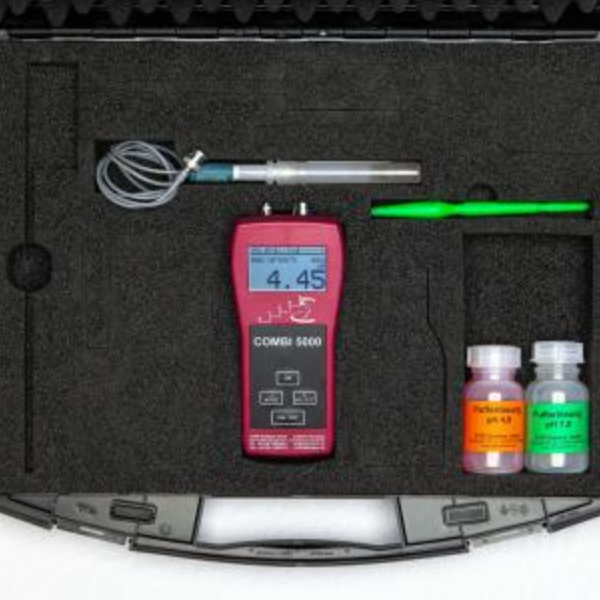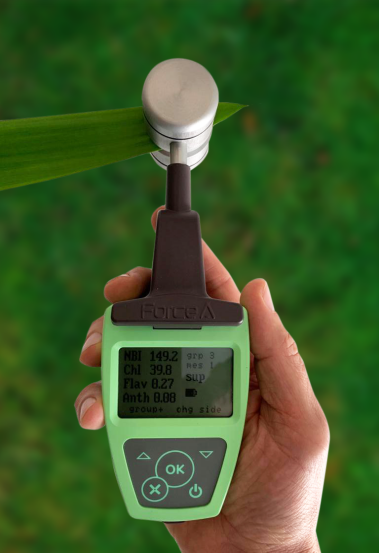什么是表型性状?育种、作物科学
定义
你可能已经在科学报告或论文中遇到了“性状”这个词,但仍然对什么是表型性状感到困惑?在Hiphen,总是使用术语“性状”来定义可为你们的植物表型项目进行的所有不同测量。
一般来说,表型特征,也称为phene,是个体在特定环境中基因组表达所产生的数量或质量特征。这个术语并不局限于植物,一个性状可以在器官、植物或冠层的尺度上确定。性状的集合(phene),构成个体的表型。因此,植物表型是测量性状以确定植物或冠层表型的科学。
在Hiphen,使用内部技术收集和分析来自无人机或移动设备的图像,是非破坏性特征评估专家。它允许在一个季节内多次计算性状,而不是进行破坏性评估。监测表型可以解释你所在领域的定量和定性表现。然而,“性状”一词涵盖了许多不同的情景!
十年来,植物表型的通量和精细程度不断提升,逐渐由结构数量性状转向功能性状。植物功能表型是通过全方位监测基因-环境-管理互作下植物表型形成的动态过程,提取主要由基因调控、反映生理生态过程对环境-管理响应能力的功能性状。植物功能表型对于高效的预测与评估种质资源间目标性状差异,进而提升遗传育种效率具有重要意义。该专刊旨在集中展示植物功能表型的研究前沿,我们欢迎相关研究的投稿,包括冠层结构的动态变化、不同物候期的获取、环境胁迫的响应及资源利用效率的量化等。
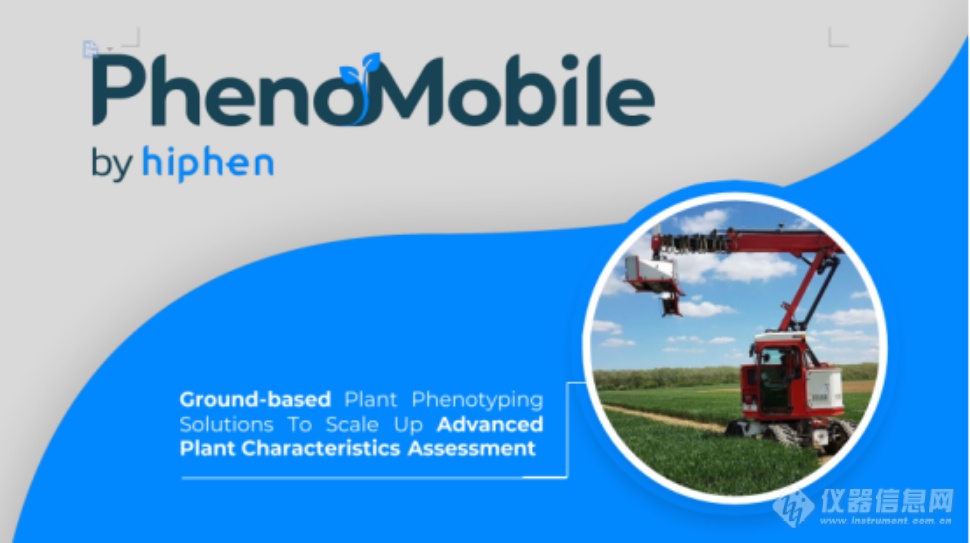
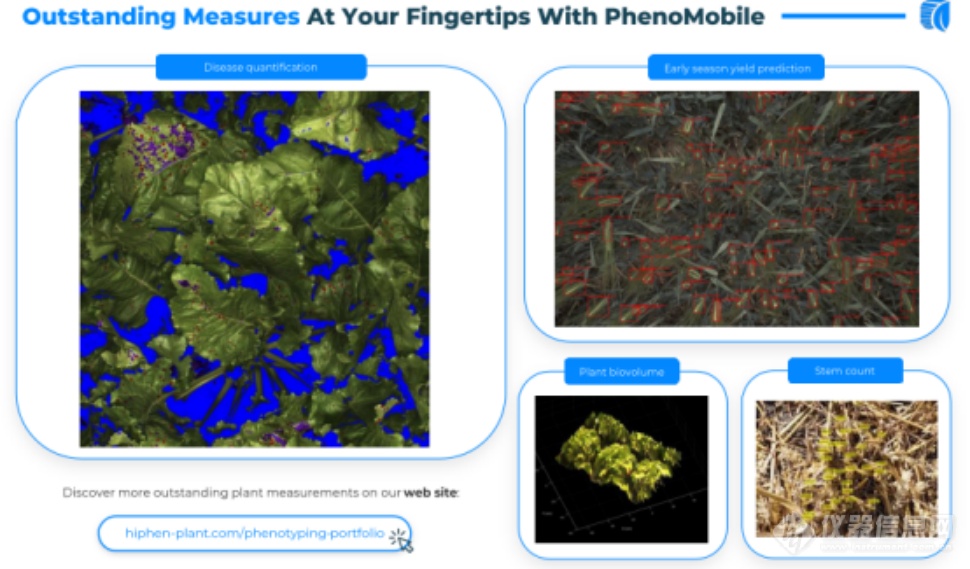
特征类别
通过高通量植物表型对性状进行测量会产生变量:一个离散或连续的数量,可以量化性状,然后用于比较不同的个体。相关变量的可用性和精度取决于传感器的技术发展和解释方法的成熟度。
然而,表型性状可能来自非常不同的性质。Hiphen定义了性状的类别:
在特定时间测量的状态特征,是作物/植物/器官的固有特性。它模拟特定时间的植物结构和组成。
动态性状基于对特定时期内状态性状的重复估计,但除了时间尺度外不需要额外的输入。它通常对一段时间内的原始性能进行建模。
农业气候/功能特性描述植物过程的质量,例如其用水效率。它代表了植物的“净”表现,与动态性状相反,是理解产量或特定植物行为的主要驱动因素。其也有望成为该植物更具遗传性的特征,通常需要结合动态和环境特征。
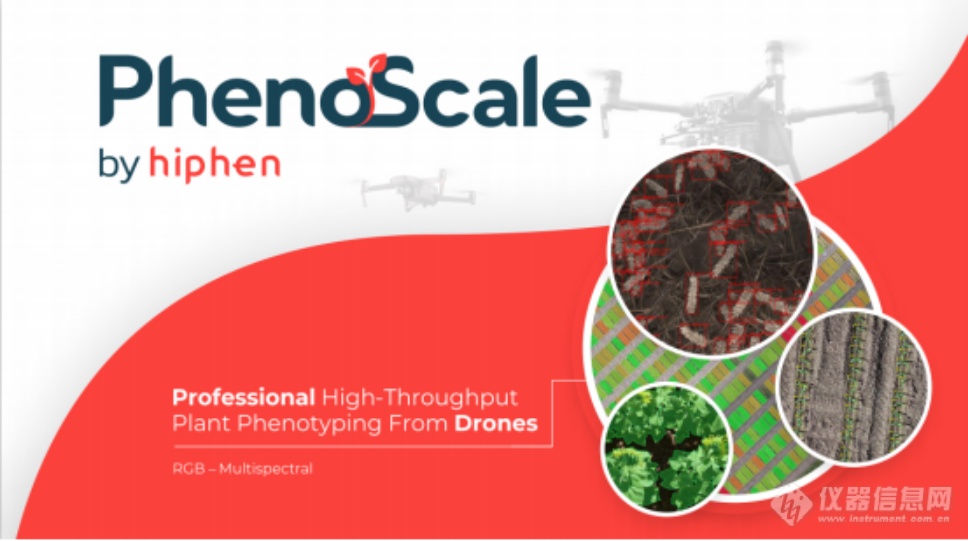
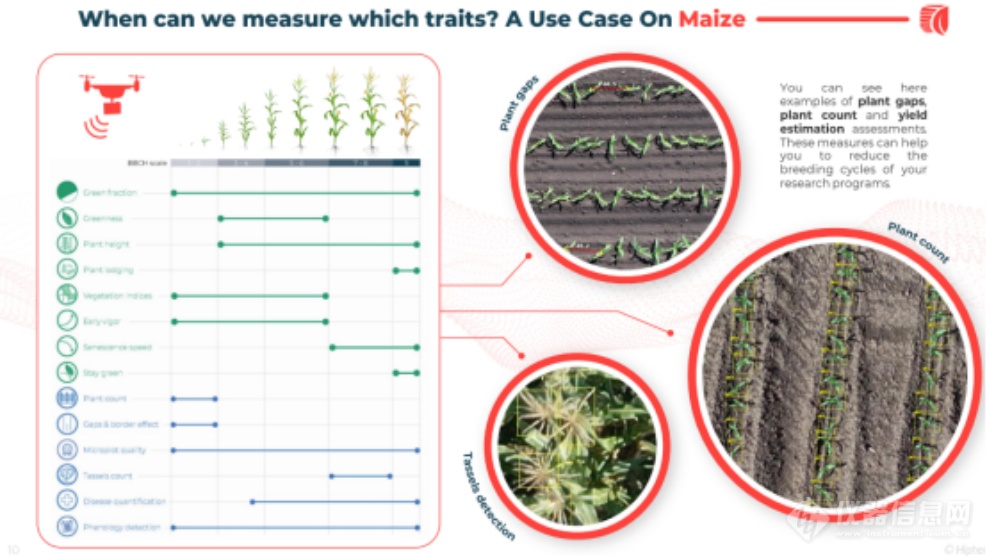
例如,在图表中展示了Hiphen如何评估作物的光合效率。在无人机飞行后,我们将能够将您的原始数据解释为状态特征/变量(步骤1)(请记住,它可是生物物理的、生物化学的或健康状态的!)。通过在关键物候期的生长季重复飞行,我们将能够随着时间的推移整合状态特征/变量,并将其转化为动态特征(步骤2),例如活力或衰老(保持绿色)。我们可以通过农艺学建模将这些动态性状与环境信息相结合,将其转化为真正的农艺性状(步骤3)。在此同时,你只需来享受在我们的数据平台Cloverfield上进行的试验中获得的干净、定性的信息。
以下是一个在Cloverfield中分布特征(绿色分数或Fcover)的例子:
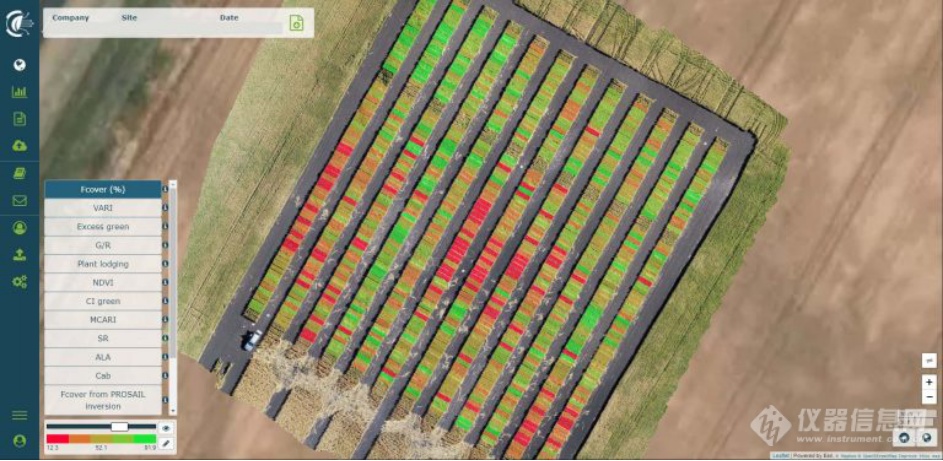
表型特征附录
状态特征
这些状态特征可以直接在树冠上测量,并且在一个精确的时间内只取一个值。它们可分为三类:
生物物理特征描述了树冠、植物或器官的结构和形态特征。通常会描述更容易接近的植物地上部分:在冠层水平上,重点通常是绿覆盖率、绿色面积指数、叶向、植株高度、倒伏、植株密度、穗密度。
生物化学特性提供了有关植物生物化学的信息。例如,叶片或树冠的叶绿素含量是决定光合作用潜力的重要生化特征。
健康特性提供了有关植物健康的信息。例如,疾病症状的检测、植物受污染部分的确定都是卫生特征,这些特征通常来自人类专家对症状严重程度的视觉评分。

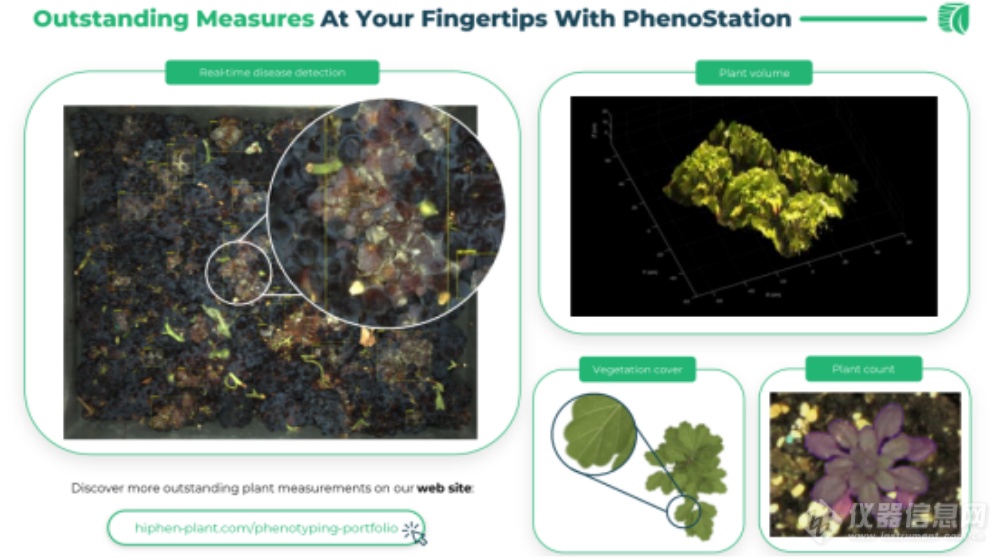
状态性状/变量:
性状 | 机械 | 人工智能 | |
机械学习 | 深度学习 | ||
绿覆盖率 | ✓ | ✓ | ✓ |
叶面积指数 | ✓ | ✓ | ✓ |
高度 | ✓ | ✓ | |
倒伏评分 | ✓ | ✓ | |
叶片叶绿素含量 | ✓ | ✓ | ✓ |
冠层叶绿素含量 | ✓ | ✓ | ✓ |
植株密度 | ✓ | ✓ | |
作物覆盖率
| ✓ | ||
衰老分数 | ✓ | ||
穗密度 | ✓ | ||
病害分数 | ✓ | ||
动态特征
动态特征基于对状态特征的反复观察。育种者中关注的动态特征是早期活力或保持绿色。早期活力是指植株或冠层的生长速度,而保持绿色是指植株或冠层的衰老速度。动态评估植物结构可塑性的具体特征,例如叶片滚动。物候性状也是通过检测植物形态的质量变化来衡量的动态性状。在小麦中,分蘖、茎伸长和抽穗或开花是通过监测植株高度或麦穗密度等生物物理性状来评估的。
功能特性
由于在植物表型和生态学的背景下对功能性状的概念进行了探讨,文献中存在几种功能性状的定义。C.M Caruso在《国际植物科学杂志》第181卷中提出,“功能性状通常被认为是植物表型的一个方面,通过调节与生物和非生物环境的相互作用影响生长、存活和繁殖”。我们建议将功能性状定义为描述冠层、植物或器官对环境反应的性状。由于它们明确说明了某些工艺的环境条件,因此预计它们对某些环境因素不太敏感。因此,它们比大多数其他性状更具遗传性。效率性状是一种常用的功能性状,用于评估植物利用哪些元素进行生长的效率。它们包括辐射(RUE)、水(WUE)和氮(NUE)的使用效率。
What is a phenotyping trait?
Breeding,Crop science
1/ Definition
You probably already crossed the word “trait” in scientific presentation or in papers, but you are still confused about what is exactly a phenotyping trait? At Hiphen, we always use the term "trait" to define all the different measurements that we can make for your plant phenotyping projects.
Generally speaking, a phenotyping trait, also called phene, is a quantitative or qualitative characteristic of an individual resulting from the expression of its genome in a given environment. This term is not restricted to plants and a trait can be determined at the scale of an organ, a plant or a canopy. The collection of traits, or phene, constitute the phenotype of the individual. In consequence,Plant phenotyping is the science of measuring traits to determine plant or canopy phenotype.
At Hiphen, we are specialist of non-destructive traits assessments thanks to our in-house technology to collect and analyze images from drones or phenomobiles. It allows to calculate traits multiple times during the season as opposed to destructive assessments. Monitoring the phenotyping allows to explain the quantitative and qualitative performance of your field. However, the term “trait” covers a lot of different reality: let’s take a deep dive!
2/ Categories of traits
The measurement of traits with high-throughput plant phenotyping produces variables: a discrete or continuous quantity that quantifies the traits that can then be used to compare different individuals. Traits availability and the precision of the associated variables depend both on sensors’ technological development and interpretation methods maturity.
However, a phenotyping trait can be from a very different nature. At Hiphen, we define categories of traits:
· State traits which are measured at a specific time and are intrinsic properties of the crop/plant/organ. It models the plant structure and composition at a specific time.
· Dynamic traits which are based on repeated estimates of state traits over a specific period but do not need additional inputs except a time scale. It often models the raw plant performance over a period of time.
· Agroclimatic / Functional traits describe the quality of the plant processes, for instance its efficiency to use water. It represents a “net” performance of the plant, opposed to dynamic traits, and allow to understand the main driver of the yield or specific plant behavior. It is also expected to be more heritable characteristic of the plant. It often requires a combination of dynamic and environmental traits with.
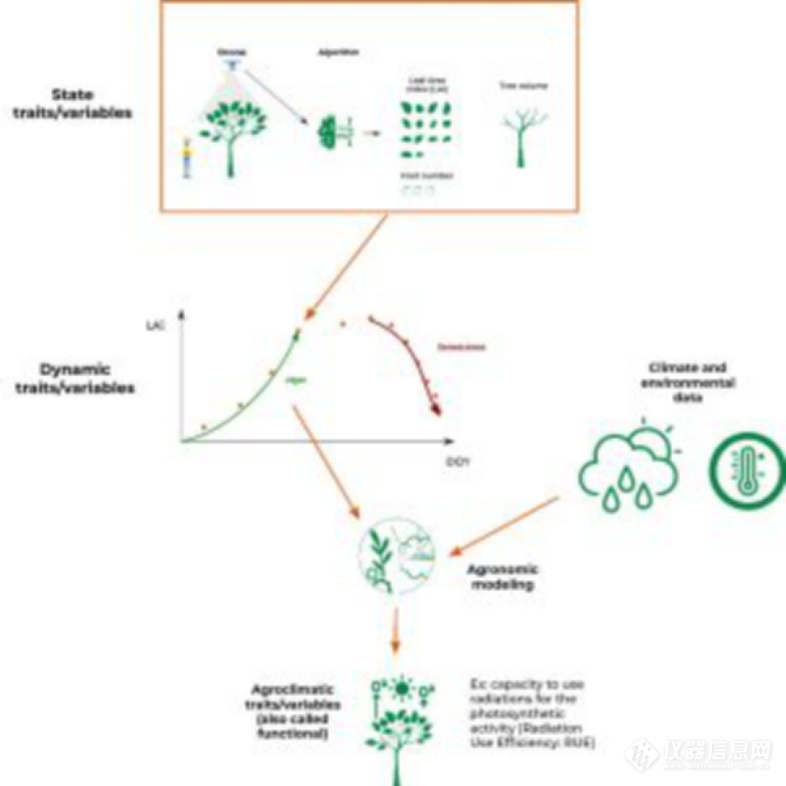
For instance, we present in the diagram how at Hiphen we will evaluate the photosynthetic efficiency of your crop. After your UAV flights, we will be able to interpret your raw data into state traits/variables (step 1) (remember, it can be biophysical, biochemical, or sanitary!). By repeating your flights during the growing season at key phenological stages we will be able to integrate over time the state traits/ variables and transform them into dynamic traits (step 2) such as vigor or senescence (stay green). We can transform these dynamic traits into true agronomical traits (step 3) by combining them with environment information using agronomic modeling. Meanwhile, you just have to relax, sit back and enjoy clean, qualitative information from your trial on our data platform:Cloverfield.
By the way, here is an example of the distribution of a trait (green fraction or Fcover here) in Cloverfield:
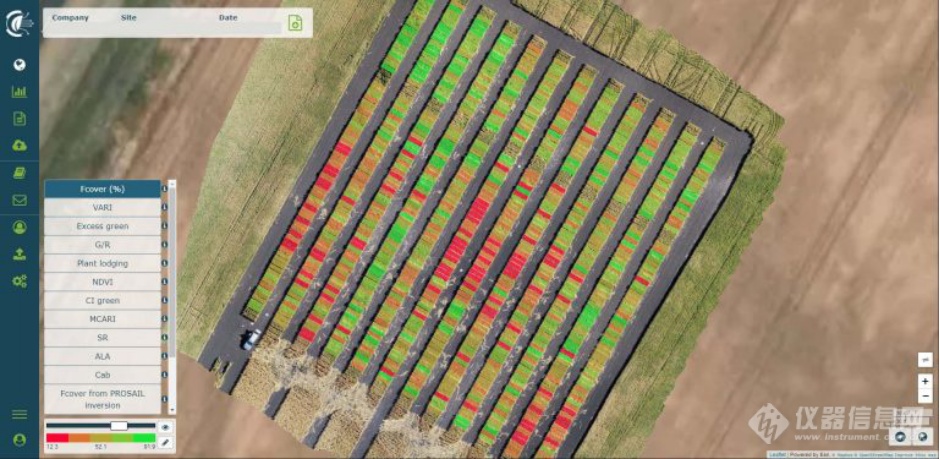
Phenotyping Traits Appendix
States traits
The states traits can be measured directly on the canopy and take exactly one value at a precise time. They can be categorized into three groups:
· Biophysical traits describe the structural and morphological characteristics of canopies, plants, or organs. The aerial parts of the plant that are more easily accessible are often described: at the canopy level focus is generally on Green Fraction, Green Area index, Leaf orientation, plant height, lodging, plant density, ear density.
· Biochemical traits provide information on the plant biochemistry. For instance, the chlorophyll content of a leaf or a canopy is an important biochemical trait that determines the photosynthetic potential.
· Sanitary traits provide information on the plant health. For example, the detection of disease symptoms, the determination of contaminated parts of the plant are sanitary traits that are often derived from visual scoring of the symptoms severity made by human experts.
Example of state traits/variables:
Trait | Mechanistic | AI | |
Machine Learning | Deep Learning | ||
Green Cover Fraction | ✓ | ✓ | ✓ |
Leaf Area Index | ✓ | ✓ | ✓ |
Height | ✓ | ✓ | |
Lodging Score | ✓ | ✓ | |
Leaf Chlorophyl Content | ✓ | ✓ | ✓ |
Canopy Chlorophyll Content | ✓ | ✓ | ✓ |
Plants Density | ✓ | ✓ | |
Crop Cover Fraction | ✓ | ||
Senescence Fraction | ✓ | ||
Head Density | ✓ | ||
Disease Fraction | ✓ | ||
Dynamic traits
Dynamic traits are based on repeated observations of state traits. Popular dynamic traits among breeders are the early vigor or the stay green. The early vigor is the plant or canopy growth speed, while the stay green is the plant or senescent canopy rate. Specific characteristics of the plant architecture plasticity are evaluated dynamically, such as the leaf rolling. Phenological traits are also dynamic traits that are measured by detecting qualitative changes in plant morphology. In wheat, tillering, stem elongation and heading or flowering are evaluated by monitoring biophysical traits such as plant height or wheat head density.
Functional traits
Several definitions of functional traits exist in the literature due to the concept being explored in the context of plant phenotyping and ecology. C.M Caruso in the International Journal of Plant Science vol. 181 proposes that “functional traits are generally considered aspects of plant phenotypes that influence growth, survival, and reproduction by mediating interactions with the biotic and abiotic environment”. We propose to define functional traits as traits describing canopy, plants, or organ reactions to the environment. Since they account explicitly for the environmental 17 conditions on some processes, they are expected to be less sensitive to some environmental factors. They will therefore be more heritable than most of the other traits. Efficiency traits are commonly used functional traits that evaluates the efficiency with which elements are used by the plant to grow. They include the radiation (RUE), water (WUE) and nitrogen (NUE) use efficiencies.
更多![]()
博普特合作伙伴Videometer参加ISTA成立100周年种子会议
厂商
2024.07.29
科学家利用博普特合作伙伴Videometer的多光谱成像系统发表糖衣替代物研究文章
厂商
2024.06.04
博普特成功参展2024植物表型组学青年科学家论坛
厂商
2024.05.31
博普特合作伙伴STEPS成功参展第26届中国国际花卉园艺展览会
厂商
2024.05.29





